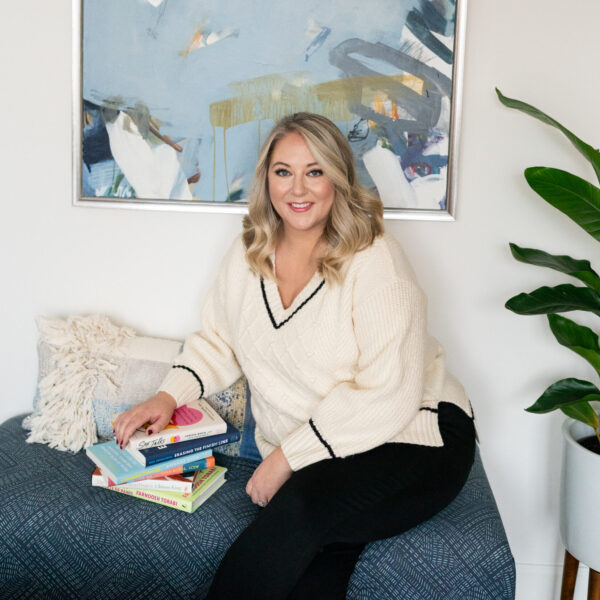How To Tell Your Story in a Book
In this blog post, I’ll help you decide which book genre best suits your story and business goals, and how to tell your story in books.
Do you have a burning desire to share your story and life experiences in a book?
Writing a book is a profoundly personal and transformative journey, but how do you decide on the suitable format?
How do you know which stories and parts of your life will most effectively relate to your reader?
Storytelling is one of the most universally compelling – and time-tested – ways to reach your reader, but it is more complex than once upon a time.
In this blog post, I’ll help you decide which book best suits your story and business goals and how to tell your story in books.
Let’s start with the memoir, the most personal of books.
1. Memoir: A Deep Dive into Your Life
Memoirs offer an in-depth, chronological retelling of our lives.
While non-fiction, it’s a narrative that often reads like fiction – encompassing beginnings, middles, and the present moment.
However, a word of caution: despite the allure of this format, it’s worth noting that memoirs are notoriously tricky to sell unless you already have a robust platform or a profoundly unique story..
Celebrity memoirs and stories, extraordinary lived experiences, and formerly untold stories from vantage points that are unique, dominate this space.
Breaking into the memoir market might be challenging if you don’t have a great media track record, are under the radar on social media, or aren’t an established writer.
I don’t want to deter you from going this route, but it’s important to set realistic expectations for a tricky segment of the publishing industry.
The good news is that memoir is one of many options to tell your story in books.
2. Personal Essay: Capturing Key Moments
If you have a unique story to share but want more flexibility, personal essays or narratives might be the perfect fit.
Unlike memoirs, this format doesn’t demand a linear narrative.
Instead, it offers readers glimpses – moments that provide profound insights or key lessons – throughout the book.
Think of collections like those from Farnoosh Torabi’s “A Healthy State of Panic” or Jen Winston’s “Greedy.”
These stories, often spanning fewer pages than an average chapter, encapsulate critical moments and lessons from an author’s life.
They offer an emotional ebb and flow, taking readers on a journey from laughter to tears and back again. They can also include a lesson learned or a moral to the story.
It’s a way to tell pieces of your story that resonate with you – and your readers – without the demand for complete chronology.
But what if you want the best of both worlds?
Next up: a blend of both as seen in prescriptive memoirs.
3. Prescriptive Memoir & Advice How-To: A Blend of Story and Lessons
Prescriptive memoirs are a personal favorite and a genre that’s been popular for ages..
As an author, it allows you to wear two hats simultaneously: the storyteller and the teacher.
This format is like a 60-40 dance. Sixty percent of the book consists of personal stories, and the remaining 40% focuses on teachable moments. To invert that ratio, playing in the 60 or 70% teaching with 30-40% stories could be more angled as an Advice How-To.
But writing in these genres is about more than just storytelling. It’s about guiding the reader, offering them insights, journal prompts, and actionable exercises stemming from personal experiences.
Now that you know your options, let’s try to pinpoint which suits your story.
What Type of Book Is Right For You?
The truth is that pretty much ANY non-fiction book includes a hearty dose of YOU. And that’s a great thing! It’s an opportunity to build a connection with your reader, and to illustrate your points in a deeper way.
When considering the format that’s right for your story, it’s essential to think about how your reader will receive it.
Ask yourself these questions:
- Why share this story?
- What’s the broader message or lesson?
- How do you want the reader to feel when reading it?
Remember, while your book is about your journey, it’s written for the reader.
You’re offering them a part of yourself, a glimpse into your world.
The themes in your story, be it resilience, humor, or self-discovery, should invite readers to reflect on their own lives through yours.
Writing for Yourself AND Your Reader
There’s a saying that resonates deeply with authors: Your first draft is for you, and the second is for the reader.
Your initial drafts allow raw emotions, thoughts and stories to flow uninhibited.
The subsequent drafts, where you refine and rewrite, are where you need to ensure your narrative offers value to the reader and delivers on the book’s promise.
How do you know which stories to bring into the fold to help readers reflect on their lives?
Sample a few in your book proposal.
Telling Your Story in Your Book Proposal
Your Book Proposal is the perfect place to test out your stories. It’s also a great way to capture the attention of those agents and publishers looking to partner with a voice like yours!
Your stories make you the only writer who can tell them, so why not put your whole, authentic self forward in your first impression?
Whether it’s chapter summaries, overviews, or sample chapters, use this space to flex your writer’s muscle, offering glimpses into your style and voice.
When selecting the stories, it can be tempting to include them all in your book.
It’s not uncommon for people to come to the table with ten really great ideas. But, the truth is that many stories could make for a whole series and will overwhelm the reader.
The beautiful thing about integrating a few significant and relatable stories is that people will learn from the lessons within them.
Some will learn because they see themselves in your story, and others will find the lesson through your experience.
Need help crafting your book proposal so agents and publishers get on board? Check out the Book Proposal Blueprint Program here.
The Most Effective Way to Tell Your Story
Telling your story effectively starts with identifying which type of book is best suited to your mission and goals.
Whether it’s a memoir, a collection of personal essays, prescriptive memoir, or an advice book–your chance of writing and marketing a successful book lies in choosing the format that resonates most with your voice and your reader’s needs.
And while the journey of recounting can be a bit of a roller coaster of emotions and vulnerability, the reward of seeing your words in print is magic.
Dive deep, reflect, and embrace the process of sharing your unique narrative with the world.
Ready to go all-in on your Big Book Dreams? I can help.
Check out the Book Proposal Blueprint – 10 modules and my personal support to make your book proposal a must-read and must-sign!
Share this post!
The Truth About Imposter Syndrome & Inspiration
So, if you’re ready to kick imposter syndrome to the curb and grab your book-writing journey by the horns, you’re in the right place.
Rethinking Bestseller
Becoming a bestseller is a wonderful accomplishment, but for many who seek to see their books on shelves, it’s not the end-all-be-all, and for a vast majority, it’s a goal that can be more harmful than good.
Write a Book in 2024: Activate Your Plan
Activate your plan to write a book in 2024 by taking small, intentional steps that are proven to create momentum and inspiration.
Need a roadmap to publishing your book?
I’ve got you covered!
Enter your name and e-mail below and I’ll send you my roadmap for developing your book idea. You’ll learn how to attract the right agents and publishers, and be on your way to getting your book out into the world!


